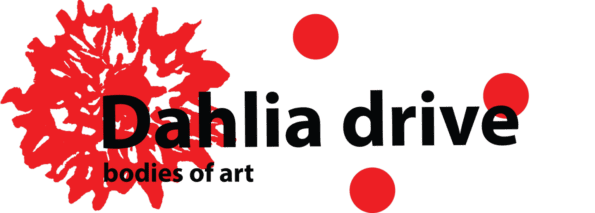G̱án ḵ’aldangáagang! It’s amazing!
Ts’úu íist uu tlaawhlgáagang. It’s made out of red cedar. The Puffy Coat has serious Japanese influence; simple, elegant, no unnecessary parts. No angry corners. ‘Woven cedar’ printed on the coat exterior mimics cedar strips the Haida weave into clothing, baskets and hats.
Áa uu G̱ántl íijang. Here is some water. The lining of the coat is G̱uhlahl/jade with clear dots to represent water bubbles.
A Leonardo spine down the center back represents where we are all the same; a talisman of strength. Hlḵ’yáan ḵ’úst’aan Frog is printed on the collar and Tsiin Salmon is on the back. Cuddly, washable, warm, two ties and you are off.
The exterior shell and puffy layer are made from recycled, water resistant polyester. The lining is made from reclaimed curtain sheer roll ends. All are bought white and cut to shape. The lining and exterior are printed with paper painted and/or printed with dye. The Leonardo da Vinci spine (including his mirrored Italian script) and the G̱úuj wolf image are screened onto paper and added last before assembling.
To create the ‘cedar’ weave, lengths of paper are waxed over weathered wooden boards (we use the door of our studio). These lengths are painted in ‘cedarish’ shades of dye, cut into strips and woven together on G̱uhlahl painted paper so that between the weaves, ‘water’ peaks through (water is everywhere). The lining paper is painted with G̱uhlahl dye, then screened with dots of clear paste to leave them white once heat set; bubbles in the water.
Dried paper is pinned to each cut piece of fabric and heat pressed to transfer the dye. The collar is cut from found remnants dyed to the appropriate hue and printed with Hlḵ’yáan ḵ’úst’aan Frog . A sandwich is made with the puffy material in the middle and pinned carefully in order to quilt it through all layers with a sashiko stitch. The panels are then bound with tape and flat seamed together. It is sewn to be reversible but there is no pocket on the inside (we tried and it was too bulky).
After the materials are gathered, it takes 50 hours to build. Send it to China for cheap labour? Can’t be done. This is a labour of love, not manufacturing. We are grateful we can make that choice. We are grateful if you, too, can make the choice to purchase one. The coat is made to order in Powell River, B.C. and will take up to 2 months to build and finish.
K’uudáats’aay k’íinaang. The coat is warm! Pair with gloves to the elbow and an infinity scarf. Wash by hand and hang dry.
“About Six thousand years before today, the cedar tree arrived in Haida Gwaii and changed the course of Haida history. Our culture became dependent on this tree, which we used to create most of the things we needed to survive and prosper.” – Nika Collison, Ts’aahl Eagle Clan, “Raven Travelling; Two Centuries of Haida Art” VAG

Dángkw gudangáay ‘láa us? Are you happy?
Send us a photo!
Write a review!
wendyvanriesen@gmail.com
Want to see Tsiin on any of the other structures???
Díik hl súudaa. Tell me!
wendyvanriesen@gmail.com
Dáng gudáakw gin hl isdáasaang. I’ll do my best for you.


